Reviews
La Femme dà côté
François Truffaut
France, 1981
Credits
Review by Tyler Wilcox
Posted on 23 April 2010
Source Fox Lorber DVD
François Truffaut’s penultimate film could be considered the director’s final statement on the destructive qualities of l’amour fou, a treatise on passionate love as an incurable disease that wreaks havoc on lives. It’s heavy stuff, no doubt, and conceptually in line with such previous fatalistic love stories as Mississippi Mermaid and The Story of Adele H. Unlike those films, however, The Woman Next Door has an odd, almost inappropriate comic touch to it that suggests Truffaut (who co-wrote the screenplay with Suzanne Schiffman and Jean Aurel) wasn’t interested in his audience being swept away by the mad love he’s depicting — or perhaps that the aging director had matured beyond total identification with the heated emotional states of his film’s characters. Time and time again, his camera captures moments that distance us from the doomed lovers portrayed by Gérard Depardieu and Fanny Ardant.
It’s a curious approach to the material, since the film was reportedly inspired in part by a particularly agonizing episode in Truffaut’s life – his torrid affair and break-up with Catherine Deneuve a decade earlier, which sent the director spiraling into one of his worst depressions. “I could give royalties to Catherine,” he said after the film was released, a somewhat terrifying half-joke, given the nature (and brutal outcome) of the relationship in the film.1 Of course, he spent the shooting of The Woman Next Door falling for the luminous Ardant, with whom he would spend his remaining years, a fact that may account for the film’s somewhat uncertain mood. The film’s title sounds ominously noir-ish, it’s true, but François might have been more in the mood for a breezy romantic comedy.
The film opens with a brief prologue featuring the sad-eyed, middle-aged Madame Jouve directly addressing the camera, as she hobbles about her tennis club on crutches. This little intro feels a bit unnecessary at first, almost tacked on. Mme. Jouve doesn’t seem to share anything terribly insightful, and the film isn’t really told from her point of view; she only addresses the viewer again at the film’s conclusion. The detail that matters here is her disability. Later, it’s revealed that lovesickness is what has crippled Mme. Jouve, almost literally. Gripped by a broken love affair 20 years earlier, she attempted suicide. Her life was spared, but the use of one of her legs was not. She survived her ordeal, but only because she has absolutely no contact with her former beau. When he shows up at the club later in the film (ignorant of her suicide attempt), Mme. Jouve disappears, unable to face him even after more than two decades apart. The only way for her to go on living is without him.
We’re then introduced to Bernard and Arlette Coudray who live with their young son in a small village. The Coudrays appear happy and stable in this cozy, near-banal suburban setting, comfortable with one another. Upon hearing that new neighbors are moving into the vacant house next door, they joke about having to stop making love on the lawn. The levity ends, however, when Bernard discovers that one of the new neighbors is Mathilde Bauchard, a woman with whom he had a passionate on and off affair eight years earlier, now married to an older man, Phillipe. Instinctively, Bernard and Mathilde do not reveal their relationship to their respective spouses, only the first in a series of deceptions to come.
Bernard half-heartedly avoids Mathilde, treating her coldly and providing a feeble excuse to miss a dinner his wife arranges with the Bauchards. But a chance encounter at the supermarket leads to a rekindling of old desires. Bernard kisses Mathilde in the parking garage. She faints dead away. This is the first of several not-very-picturesque settings Truffaut provides for his central characters — is there any place less lovely than a parking garage? From the very beginning of their affair, Truffaut refuses completely to romanticize Mathilde and Bernard’s situation.
Despite a brooding performance from Depardieu, Bernard comes across as almost comical in Truffaut’s hands. The director delights in putting him in awkward situations and settings, as though mocking Depardieu’s hyper-masculine screen presence. In one sequence, Bernard locks his keys in his car with the motor running, and has to send his son through the trunk to retrieve them, a vignette that might be more suited to Small Change than here. The film’s most humorous sight gag sees Depardieu sitting atop a scale-model oil tanker, part of his job training sea captains. Bernard looks ridiculous, little more than an overgrown child with his toys.
The raven-haired Mathilde, on the other hand, is a tragic heroine. Ardant’s vulnerable performance lingers longest with the viewer, her classic femme fatale features and dark-eyed gaze captured lovingly by Truffaut’s camera. Helplessly drawn to Bernard for reasons that seem perplexing even to her, the cliché would be to say she’s like a moth to the flame, but Bernard’s flame burns very low indeed. Still, Mathilde was the more committed of the pair. “I loved you,” she tells him, in a moment that could have been plucked from one of Truffaut’s Antoine Doinel films. “You were merely in love.”
The couple begins an affair, renting a modest flat in the city. Mathilde’s rapturous smile as she leads Bernard through the doorway and out of the camera’s view is one of the film’s most striking moments, accompanied by swelling, dramatic music. But Truffaut undercuts it almost immediately, as the shot lingers on the hallway just long enough to catch a maid removing dirty linens from the room next door. Isn’t it romantic? It’s also a none-too-subtle foreshadowing of events to come: They may be alone now, but soon enough, Bernard and Mathilde’s dirty laundry will be aired for all to see.
The remainder of the film deals with the emotional fallout that follows the pair’s re-ignited passion. Mathilde tries to break it off at first, but Bernard refuses. In yet another decidedly un-sexy setting, he virtually forces himself upon Mathilde in his station wagon. Finally, their relationship comes to light when a jealous Bernard explodes violently during a party thrown at the Bauchard’s home, causing Mathilde to faint again. This would be the film’s dramatic high point — except that Truffaut precedes it with a comic scene in which Mathilde’s dress is caught on her chair. When she gets up, she is stripped to her skivvies, much to the amusement of her guests — a moment that hints at the real exposure to come. In a wild shift of tone, moments later, Bernard is brutalizing her in front of the same guests, their secret laid bare. As with the dirty linens in the previous scene, Mathilde’s literal and figurative disrobing in this sequence feels a bit clumsy and obvious. But as becomes readily apparent at the film’s shattering climax, Truffaut was not shooting for ambiguity here.
The ways in which Bernard and Mathilde’s respective spouses react to the affair are markedly different. Arlette Coudray is almost comforting, treating Bernard like a child who has misbehaved. While there is a trace of chilliness in her subsequent announcement that she is pregnant with her and Bernard’s second child, it’s clear that she is willing to forgive and forget, and to allow Bernard to resume his husband/father roles. Mathilde doesn’t get off so easily. Though Phillipe at first tries to play the understanding husband, he can’t hide his bitterness at being made a cuckold. “I am married to a liar,” he says bluntly. The final straw comes when he angrily tells his wife that she has been saying Bernard’s name in her sleep. Mathilde breaks down and is institutionalized. As we’ve seen from Mme. Jouve’s story (and in Truffaut’s earlier Story of Adele H.), it’s the women who suffer the consequences of amour fou more dearly than the men in the film.
Pauline Kael had nothing good to say about The Woman Next Door, calling it “little better than a television movie,”2 and it’s in the film’s last quarter that you see what she’s getting at. After she leaves the hospital, uncured of her obsessive feelings, there are a handful of cringe-worthy scenes — Mathilde cutting Bernard out of photos, Mathilde gazing forlornly as a pair of lovers leave the apartments where she and Bernard met for their trysts — that feel as tawdry and heavy handed as any daytime soap opera.
But Truffaut redeems himself in the film’s devastating, dream-like final moments. Seeing a light on late at night in the now-empty house next door, Bernard goes over to find Mathilde has returned. Wordlessly, they make love. Then, with an almost businesslike manner, Mathilde takes a revolver from her handbag and shoots Bernard through the temple, killing him instantly. And then she turns the gun on herself.
It’s not a subtle way to end this pair’s story, but it’s powerful nonetheless, given an almost operatic intensity by Depardieu and Ardant. For all the tonal inconsistencies throughout The Woman Next Door, Truffaut hammers his ultimate point home in a brief epilogue. As an aerial shot takes us high above the village, Mme. Jouve utters Bernard and Mathilde’s epitaph: “Neither with you nor without you…”
More Love on the Run: The Films of François Truffaut
-

Les Mistons
1957 -
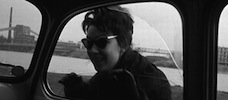
Une histoire d’eau
1958 -

The 400 Blows
1959 -
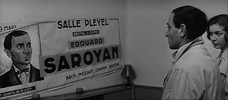
Shoot the Piano Player
1960 -
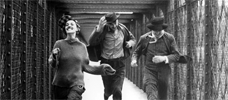
Jules and Jim
1962 -
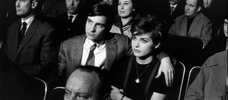
Antoine and Colette
1962 -
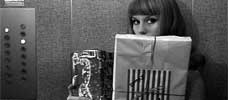
The Soft Skin
1964 -
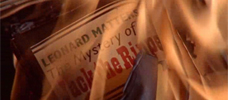
Fahrenheit 451
1966 -
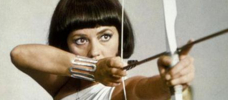
The Bride Wore Black
1968 -
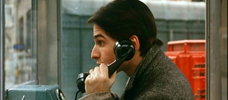
Stolen Kisses
1968 -
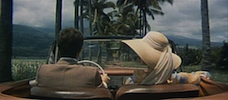
Mississippi Mermaid
1969 -

The Wild Child
1970 -
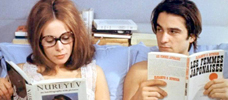
Bed and Board
1970 -

Two English Girls
1971 -
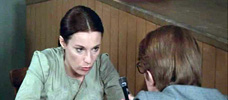
Such A Gorgeous Kid Like Me
1972 -

Day for Night
1973 -
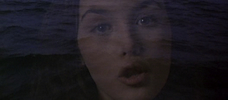
The Story of Adele H.
1975 -

Small Change
1976 -
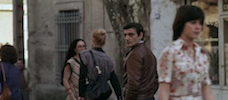
The Man Who Loved Women
1977 -
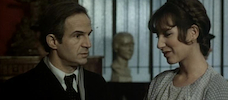
The Green Room
1978 -
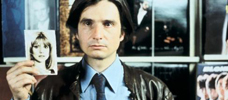
Love on the Run
1979 -

The Last Metro
1980 -
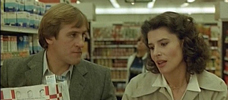
The Woman Next Door
1981 -
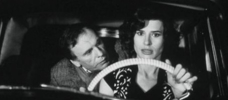
Confidentially Yours!
1983
We don’t do comments anymore, but you may contact us here or find us on Twitter or Facebook.



